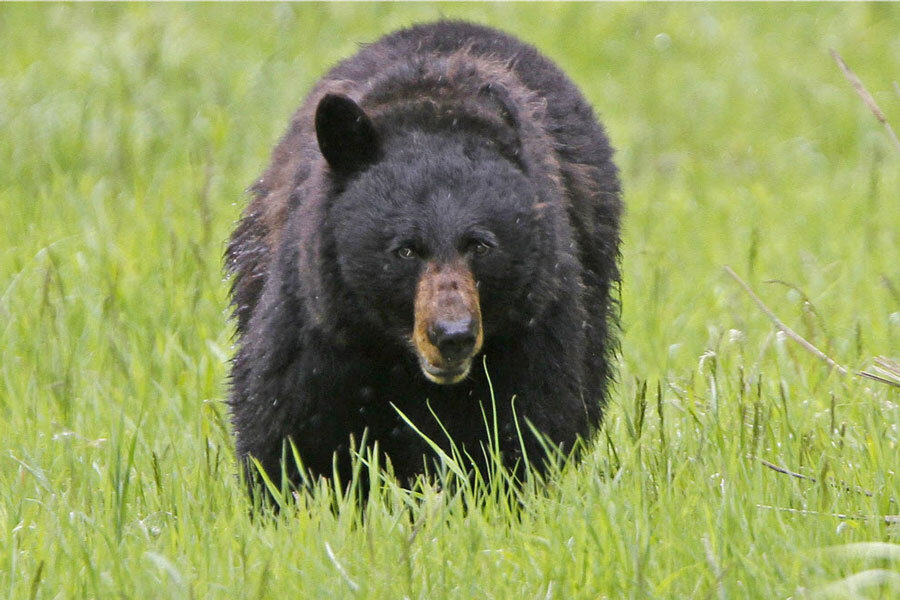In wake of fatal bear attack in New Jersey, how often do humans meet bears?
Loading...
Last weekend, a Rutgers University student was killed by a black bear while hiking in a wooded area of northern New Jersey.
Five young men, all from Edison, N.J., were in the Apshawa Preserve when a 300-pound black bear started trailing them. Frightened, the men started to run.
They split up. Four of them returned to find each other. One was missing. His name was Darsh Patel, 22, and he was majoring in information technology and informatics.
Police were called. Soon, Patel's body was found. Authorities killed the bear with two rifle blasts.
The bear is being examined at a state lab to understand what prompted it to go after the hikers. Bear attacks are so uncommon that Patel's death was the first recorded fatal attack in New Jersey since before the Civil War.
"This is a rare occurrence," West Milford Police Chief Timothy Storbeck told the Associated Press. He said the bear calls his department typically receives involve bears breaking into trash cans.
Experts agree.
New Jersey has about 2,400 bears in its forest. But Department of Environmental Protection spokesman Larry Ragonese said this was the first fatal attack of a bear on a human in New Jersey since the 1850s. A 2010 report on black bears by the New Jersey Fish and Game Council said the last time someone was killed by a black bear in the state was in 1852.
Still, Mr. Ragonese said the black bear population in the state, particularly in northern New Jersey, has recently "grown out of control," according to The New York Times. New Jersey, the most densely populated state in the nation, now has confirmed bear sightings in all 21 of its counties, according to the New Jersey Division of Fish & Wildlife.
The state has seen 146 dangerous black bear encounters in the past year, according to a report from the Division of Fish and Wildlife. That's up from 99 in the previous year, a 47 percent increase.
In 2009, in an attempt to curtail the expanding population, the state instituted a black bear hunting season, which helped lower the total number of bears to between 1,800 and 2,400, the Times reported.
Between 1900 and 2009, "at least 63 people" were killed by black bears in the wild in North America, according to a 2011 article in The Journal of Wildlife Management. Of those fatal attacks, 86 percent happened between 1960 and 2009.
In the rare instance humans do come into direct contact with bears, experts offer a few tips to improve chances of survival. First and foremost, avoid feeding the bears. In New Jersey, for example, intentionally feeding bears is illegal and carries a fine of up to $1,000, according to the state Department of Environmental Protection. People are also advised to remain calm should they see a black bear passing through a residential area, as it that is not an issue "as long as it is behaving normally and not posing a threat," said Kelcey Burguess, DEP senior wildlife biologist, in a June release.
Other behaviors to avoid with black bears include not sneaking up on them, playing dead, or running away. (The only time playing dead works, according to ABC News, is in the case of a brown bear who was attacking as a defense.) In the event of a direct confrontation with a bear, make a commotion and appear as big as possible, The Washington Post said, citing experts on the best ways to survive a bear attack.
The majority of bear attacks in North America involve black or brown bears. Though there have been recorded cases of polar bear attacks, those are exceedingly rare.
- Material from Reuters and The Associated Press was used in this report.






